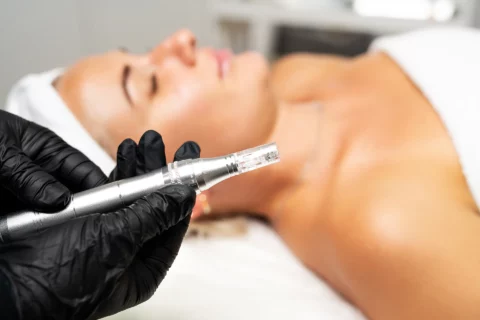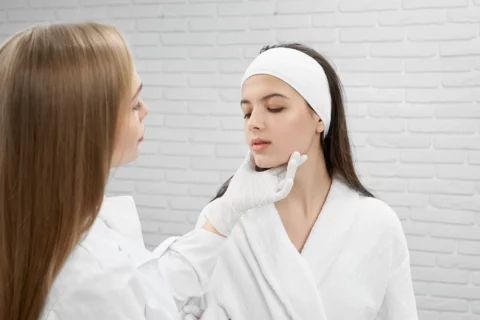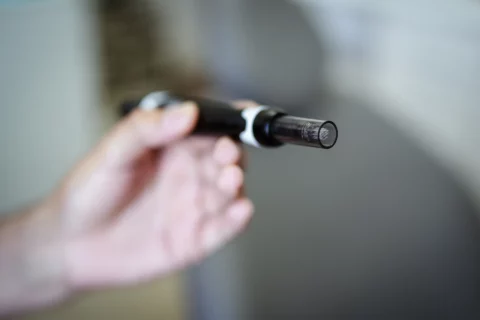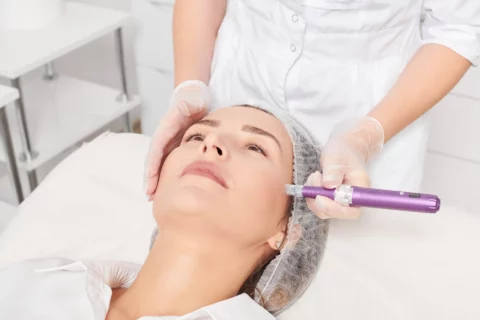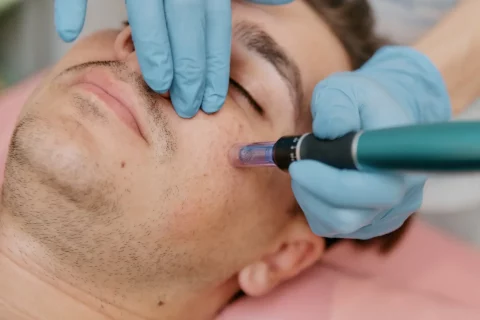Mastering effective microneedling pen techniques involves using proper motions while adjusting needle depth for different skin concerns. The most successful techniques maintain consistent pressure and speed across treatment areas, ensuring even results and minimal recovery time.
In the world of aesthetic medicine, the difference between good and exceptional results often comes down to technique. While having quality equipment is essential, how practitioners wield their microneedling pens significantly impacts patient satisfaction and treatment efficacy.
The microneedling pen has revolutionized collagen induction therapy, offering unprecedented control and versatility. However, mastering the nuances of application techniques is what truly unlocks this device’s transformative potential.
This comprehensive guide explores the techniques that aesthetic professionals can implement to achieve superior outcomes with microneedling pen treatments.
Understanding Your Instrument: The Science Behind Microneedling Pen Technology
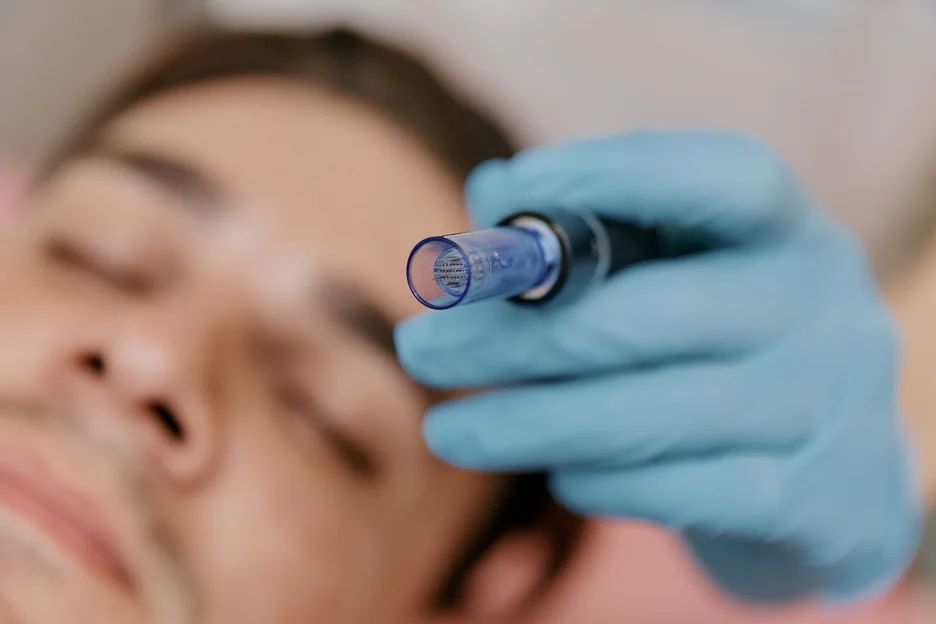
Microneedling pens utilize oscillating needle cartridges to create controlled micro-injuries in the skin. Unlike traditional dermal rollers, these devices offer adjustable needle depths, variable speeds, and vertical needle insertion that minimizes lateral tearing. The Dr. Pen range, available at Face Med Store, exemplifies this advanced technology with features that enable practitioners to customize treatments with precision.
The connection between pen functionality and technique is fundamental. Speed settings influence cellular response—higher speeds create more micro-channels quickly but require deft handling, while lower speeds allow for more deliberate application in sensitive areas.
Understanding how your device’s specific features complement different techniques ensures you’re maximizing its capabilities for each patient’s needs.
The Technique-Driven Skin Benefits of Microneedling Pens
Different microneedling techniques directly correlate with specific skin improvements:
Collagen Induction
Utilizing medium-depth (0.5-1.0mm) perpendicular stamping motions with consistent pressure triggers optimal fibroblast activity, resulting in measurable collagen and elastin production.
Scar Reduction
For atrophic acne scars, a targeted cross-hatching technique at deeper settings (1.0-1.5mm) breaks down fibrous tissue while stimulating healthy collagen remodeling.
Hyperpigmentation Management
Shallow-depth (0.25-0.5mm) treatments using gentle, overlapping circular motions enhance topical brightening agent penetration while minimizing post-inflammatory hyperpigmentation risk.
Pore Refinement
Light-depth treatments (0.25-0.5mm) with swift, feathering strokes concentrate on sebaceous areas to refine pore appearance without triggering excess sebum production.
The efficacy of these outcomes depends not just on the treatment itself but on the specific application technique employed.
Selecting the Right Tools: Equipment That Enables Technique
Your technique is only as good as the tools that facilitate it. The selection of appropriate microneedling pens and cartridges directly impacts the techniques available to you:
- Needle Configuration: 9-pin cartridges deliver more concentrated trauma ideal for scar-focused treatments, while 36-pin configurations provide broader coverage for general rejuvenation techniques.
- Cartridge Type: Nano-cartridges enable extremely shallow techniques for delicate periorbital application, while standard cartridges support the full range of facial techniques.
The Dr. Pen M8 offers versatility for multiple techniques, while the A7 provides precision for detailed work around scars or fine lines. Matching the right device to your intended technique is crucial for treatment success.
The Essential Microneedling Pen Techniques
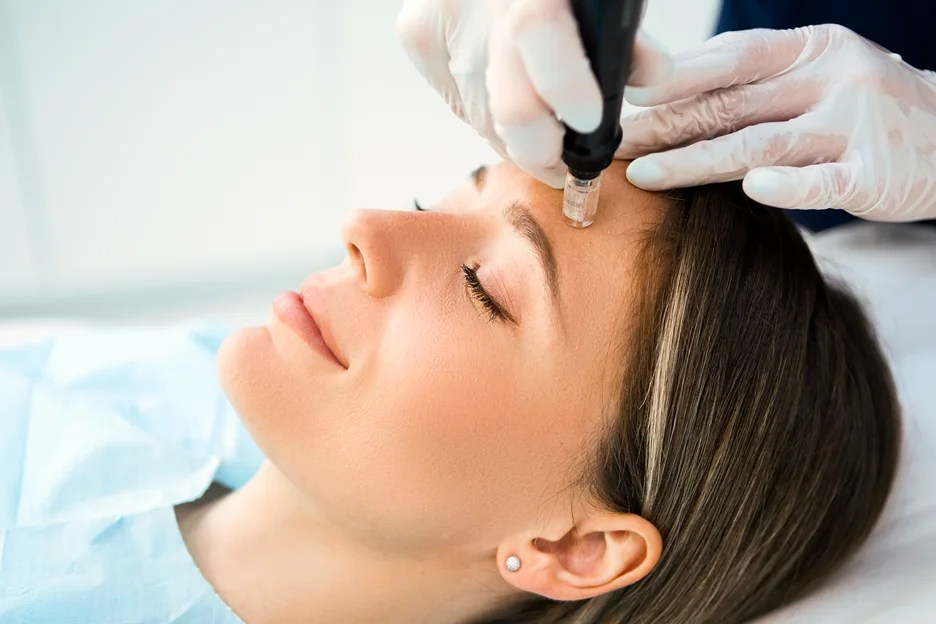
Linear Stroke Technique
Using straight, parallel movements (typically 1-2cm in length) with 50% overlap between passes ensures uniform treatment coverage. This technique excels for larger treatment areas like cheeks and forehead.
Circular Motion Technique
Small, overlapping circular movements (approximately 5-8mm in diameter) are particularly effective for addressing concentrated issues like perioral lines or isolated scars.
Cross-Hatching Technique
Creating perpendicular passes (vertical followed by horizontal) provides comprehensive coverage and balanced collagen stimulation. This technique is essential for addressing generalized texture concerns and achieving even results.
Stamping Technique
Applying the device perpendicularly with light pressure and minimal lateral movement creates focused treatment in delicate areas such as the upper lip or around the eyes.
Feathering Technique
Using progressively lighter pressure and reduced depth when transitioning between treatment zones (like hairline or jawline borders) prevents demarcation lines and ensures natural-looking results.
Layering Technique
Beginning with deeper settings (1.0-1.5mm) for initial passes, then reducing depth (0.5-0.75mm) for subsequent passes concentrates treatment in areas requiring more intensive rejuvenation.
Implementing proper cooling and hydration immediately after treatment significantly reduces recovery time. The application of specialized post-procedure products using gentle pressing motions rather than rubbing motions protects newly created micro-channels while enhancing product absorption.
Precision in Depth: Matching Needle Depth to Treatment Goals
Needle depth selection is perhaps the most critical technical decision in microneedling:
| Superficial Epidermis (0.25-0.5mm) | Enhances product penetration and addresses superficial texture with minimal downtime; ideal for maintenance or sensitive skin. |
| Deeper Epidermis/Papillary Dermis (0.5-1.0mm) | Targets fine lines and mild texture concerns; considered the “sweet spot” for general rejuvenation techniques. |
| Reticular Dermis (1.0-2.0mm) | Addresses deeper concerns like scars and significant laxity; requires advanced technique due to increased bleeding and recovery time. |
| Anatomical Considerations | Regional skin thickness varies: forehead (0.5-0.75mm), cheeks (0.75-1.0mm), periorbital (0.25-0.5mm), and jawline (1.0-1.5mm). |
Advanced Patterns and Techniques
Advanced practitioners develop signature patterns that address specific concerns:
- Star Pattern: Radiating lines from a central point for concentrated scar treatment.
- Fanning Technique: Sweeping motions that radiate outward from a central point, effective for addressing areas needing directional collagen formation like nasolabial folds.
- Grid Pattern: Creating uniform squares of treatment for methodical coverage of large areas while ensuring consistent depth and pressure.
- Targeted Depth Variation: Strategically adjusting depth within a single session to address multi-level concerns, utilizing deeper settings on scars followed by moderate settings on surrounding tissue.
How to Prepare Skin for Microneedling: Essential Pre- and Post-Treatment Techniques for Optimal Results
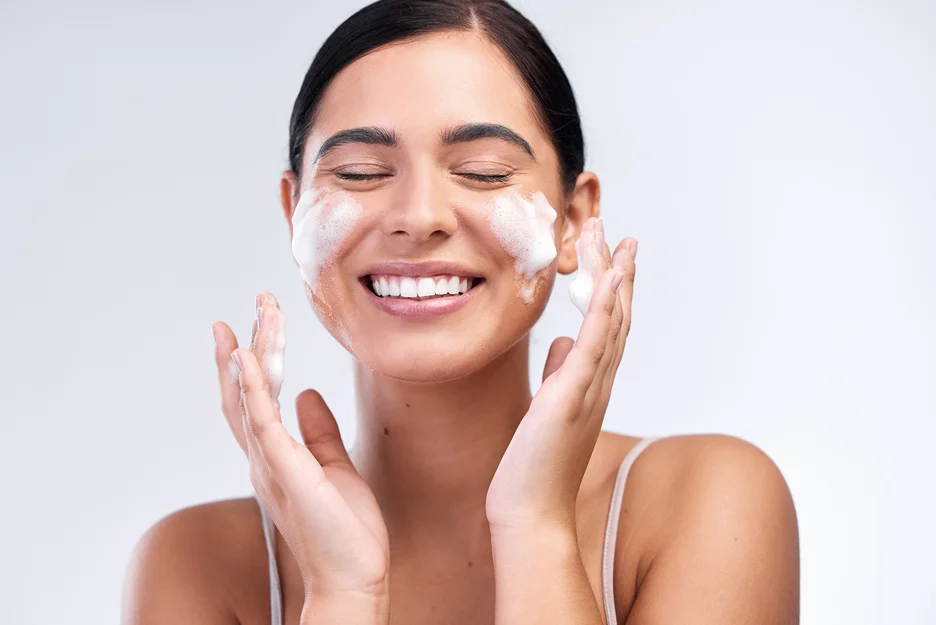
Optimization begins before the needles touch the skin:
- Skin Priming: Implementing a pre-treatment regimen with retinoids or AHAs (discontinued 3-5 days before treatment) enhances cellular response to microneedling techniques.
- Vascular Mapping: Identifying areas of high vascularity through careful examination allows for technique modification to prevent excessive bleeding or bruising.
- Surface Preparation: Double-cleansing with antibacterial cleansers followed by antiseptic application creates the sterile field necessary for safe technique implementation.
Post-treatment care directly impacts the success of the techniques employed:
- Immediate Calming Protocols: Applying specialized cooling masks containing hyaluronic acid and niacinamide within minutes of treatment completion reduces inflammation and supports barrier recovery.
- Progressive Hydration: Implementing a 72-hour hydration protocol with increasingly rich formulations supports optimal healing as the micro-channels close.
- Sun Protection Strategy: Utilizing physical (not chemical) sunscreens with SPF 50+ for at least two weeks post-treatment prevents hyperpigmentation that would undermine your technique results.
Elevating Your Practice: Specialized Microneedling Applications
For practitioners seeking to expand their technical repertoire:
Microneedling with PRP Integration
Precise application techniques for platelet-rich plasma during or immediately following microneedling significantly enhance regenerative responses.
Tapping Technique for Product Delivery
Utilizing gentle tapping motions rather than pressure-based application for introducing specialized serums during treatment increases absorption without traumatizing freshly treated skin.
Sequential Multi-Depth Approach
Programming treatment sessions to progressively increase depth across a series creates controlled inflammation profiles that optimize collagen remodeling.
Conclusion

The true art of microneedling lies not simply in creating micro-injuries but in creating them with purpose, precision, and an understanding of the cellular cascades that follow.
Technical mastery distinguishes exceptional practitioners and directly translates to superior patient outcomes. By continually refining your approach and staying current with advanced techniques, you elevate both your practice and the field of aesthetic medicine.
For practitioners seeking to enhance their microneedling capabilities, Face Med Store offers premium devices like the Dr. Pen series, specialized cartridges for various techniques, and educational opportunities through their CME-credited aesthetic courses.
Investing in quality equipment and continuous education ensures you’ll be equipped to deliver the precision and efficacy your patients deserve.

